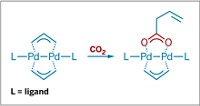Advertisement
Grab your lab coat. Let's get started
Welcome!
Welcome!
Create an account below to get 6 C&EN articles per month, receive newsletters and more - all free.
It seems this is your first time logging in online. Please enter the following information to continue.
As an ACS member you automatically get access to this site. All we need is few more details to create your reading experience.
Not you? Sign in with a different account.
Not you? Sign in with a different account.
ERROR 1
ERROR 1
ERROR 2
ERROR 2
ERROR 2
ERROR 2
ERROR 2
Password and Confirm password must match.
If you have an ACS member number, please enter it here so we can link this account to your membership. (optional)
ERROR 2
ACS values your privacy. By submitting your information, you are gaining access to C&EN and subscribing to our weekly newsletter. We use the information you provide to make your reading experience better, and we will never sell your data to third party members.
Reagents
Aluminum complex busts open benzene’s ring
Surprising reaction could facilitate new ways to make molecules from petroleum
by Carmen Drahl, special to C&EN
July 15, 2019

Benzene is big business. A natural part of crude oil, the chemical is a starting material for plastics, drugs, detergents, and more. Yet because of the molecule’s hardiness, limited chemical pathways exist for transforming benzene into other things. Now, researchers report a process that activates a carbon-carbon bond in benzene and converts the cyclic molecule into a linear one (J. Am. Chem. Soc. 2019, DOI: 10.1021/jacs.9b05925). The strategy might one day expand the range of complex molecules derived from petroleum feedstocks.
“One of the first things students learn about organic chemistry is the amazing stability of aromatic ring systems, with the simplest of these being benzene,” says organometallic chemist Francesca Kerton of Memorial University of Newfoundland, who was not involved with the study. Modifications to aromatic carbon-hydrogen bonds are far more common than anything involving aromatic carbon-carbon bonds, she explains. The new work “is therefore unexpected and could open up new avenues,” she says.
Last year, Simon Aldridge and Jose Goicoechea of the University of Oxford and their colleagues reported an aluminum complex that could activate benzene C–H bonds, potentially making it easier to couple other chemical groups to benzene’s ring (Nature 2018, DOI: 10.1038/s41586-018-0037-y). The work marked an advance because aluminum is cheaper and more environmentally benign than the transition metals typically used for such transformations. During follow-up research, to their amazement, the team made a related complex that inserts itself into a benzene C–C bond instead, thus activating it. The reaction is reversible and takes place at room temperature in an inert atmosphere.
“We didn’t believe it at first,” says Petra Vasko, a postdoc at the University of Jyväskylä, who along with fellow Oxford postdoc Jamie Hicks is a coauthor on the new work. “Jamie had to go back and do the experiments a few more times” to verify the result, which Vasko corroborated with computational studies.
This isn’t the first time chemists have wedged open benzene’s ring, Aldridge says. One well-known instance, the Buchner ring expansion, dates to the 19th century. But scant examples exist, and all involve generating fleeting, hard-to-control species in a reaction mixture. “Whereas in our system, you can make the aluminum compound that does the chemistry and stick it in a bottle,” as long as it’s kept under an inert atmosphere, Aldridge says.
Columbia University’s Gerard Parkin has activated C–C bonds in a different aromatic compound, and he heard about the work during a May visit to Oxford. “The facile, reversible cleavage of a C–C bond in benzene is an impressive achievement for any metal and is especially so for aluminum, a main group metal,” he says. Main group metals are devoid of chemically accessible d orbitals, which typically limit their reactivity compared to transition metals, he explains.
The team has made just one linear product from opening benzene’s ring so far. Goicoechea says that the chemistry is still at proof-of-concept stage. A big goal, he says, is a reaction that requires only catalytic amounts of aluminum instead of the stoichiometric amounts required currently.





Join the conversation
Contact the reporter
Submit a Letter to the Editor for publication
Engage with us on Twitter